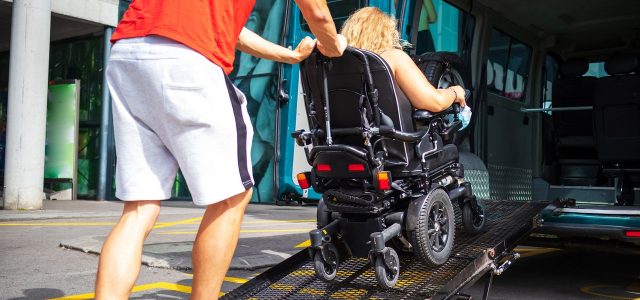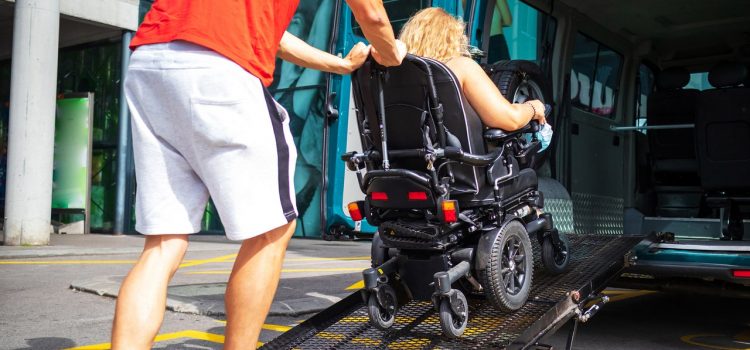


Almost a decade ago, my middle son was born with multiple disabilities. I obviously had many concerns at the time, but one of my biggest was how we would manage accessibility challenges as he grew up.
For the first few years, my son did well getting around in a car seat and a stroller. But by the time he was 3 years old it was clear how important it was for us to order his first wheelchair. He has cerebral palsy, and pediatric wheelchairs come with custom options to contour and align his body to grow well.
Initially, I tried lifting his chair into the back of my SUV. That lasted about a week before my back started hurting, so I had to look into other options. I couldn’t go to a mainstream car dealership: They don’t offer accessible van packages, and most aren’t, in any way, familiar with accessible options or features. Instead, I had to go to a specialized mobility dealer. I met with Nicole Bryson, the owner of FTMobility, a vehicle customization shop in Saddle Brook, New Jersey, that specializes in modifying vans for disabled passengers and drivers.
Mobility shops modify minivans, and some SUVs, to allow a passenger to travel in their wheelchair by installing a ramp on the side of the van or in the rear. Rear-entry vans can be modified with either a long-cut ramp or a short-cut ramp. A long-cut ramp allows the wheelchair to be pushed in between the two captain’s chairs in the second row, and a short cut keeps the wheelchair behind the chairs. I knew I wanted a rear-entry long-cut ramp. My three children are close in age, and it was the only way that they would be able to sit next to each other–something I preferred for my middle son’s social and emotional development. I also wanted my son close to the driver or front-row passenger in case he needs assistance when we are on the road.
Additionally, a side-entry van can be challenging to park. Most parking lots have only a few designated side-entry spots (the ones with the blue lines that leave enough room for the ramp). If those spots are taken, I have to circle around until one opens up. (And I can’t drop off my young son and then park the car.)
After researching all our options, I purchased a Toyota Sienna minivan modified by BraunAbility with a rear-entry ramp. I opted for an automatic ramp, so when I press the trunk button on the key fob, the lift gate opens and the ramp automatically lowers—a feature I love when I have to navigate a busy parking lot with three children.
For an extra fee, I had FTMobility install an EZ lock system. This convenient add-on allows me to click my son’s wheelchair right into the van as opposed to tethering it in four separate locations each time I get him in and out.
I have been driving this modified van for more than four years now. I love the freedom it gives our family. Aside from the ease of getting the three kids in the van, the amount of space behind the wheelchair is convenient. When it’s just the five of us, I can use that space for storage. I roll a wagon right into the van after a trip to the grocery store. (This is especially helpful after a Costco run.) Or we load the van with a beach cart all set up and ready to go–no reassembly needed once we arrive. We can also transport smaller furniture or two to three children’s bicycles. When we need room for more passengers, we have a jumper seat in the back that folds down to accommodate two more people.
Money and Maintenance Issues
As much as the van has made our lives easier, there are some drawbacks. The cost to modify a van is $10,000 to $30,000, and that’s on top of the original price of the vehicle. We were lucky to find a state program with funding sources available to help us, but it’s not an easy road, and those sources are not available for everyone.
Mobility companies, like BraunAbility, modify vans already made for retail. They move parts around, like the exhaust, the gas tank, and the air conditioning, to install the ramp. The second-row captain’s chairs that came with our original van were removed and replaced with smaller seats to make room for the wheelchair.
